Larsboat (Breve)
After building an AF4
power skiff, an AF3
sailing sharpie, and an Oracle
rowboat, I decided that the next logical project was a double-paddle
decked canoe. Since my previous projects had all been designs
by Jim
Michalak, I decided again to build one of his boats;
in this case, it would be the "Larsboat."
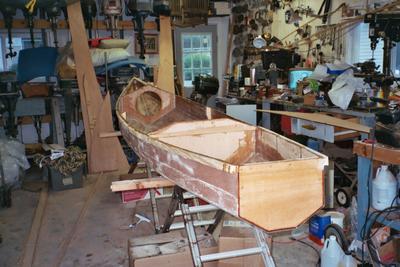
Construction was begun in August and the boat
was complete and ready to "splash" by early October.
This just happened to be the three-year-anniversary of my boat
building hobby, which has now produced four boats.
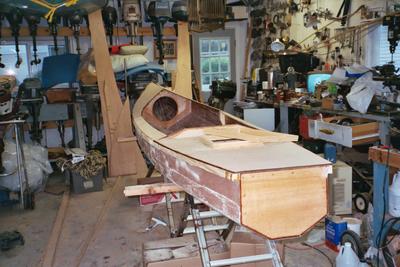
My boats have all been built sturdily, but cheaply,
of commonly-available"lumberyard" materials, and the
Larsboat was not to be an exception. The plywood used was 5.5
mm "Ultraply," a somewhat "high-grade" of
underlayment similar to the commonly-seen luan, but hopefully
made with a bit more quality. It's cost was about twice that
of the luan, about $20.00 per sheet.
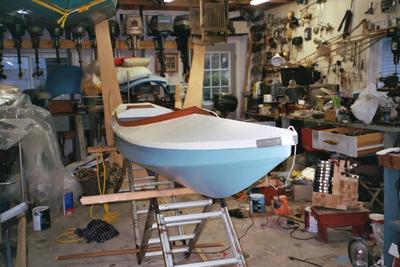
Certainly you have noticed the "breve"
part of the title.
The workmanship on my three previous boats is far from perfect;
the joinery work would not pass muster in a yacht yard. Neither
would the finish work. Yet all of them, despite their imperfections
and sometimes crude finish, do the jobs they were intended to
do. The Larsboat turned out to be no exception to any of the
above.
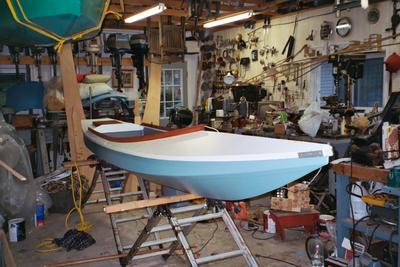
My Larsboat is 6 inches shorter than it was supposed
to be. This design is basically a Toto lengthened by 30 inches.
Jim points this out very clearly in his description of the boat.
And the drawings show that the amidships station has 30 inch
spacing, whereas the rest of the stations have 24 inch spacing.
While laying-out the stations on the sheets of plywood, however,
I overlooked this one long station and put them all on 24 inch
centers, so there is 6 inches missing from the middle of my
boat.
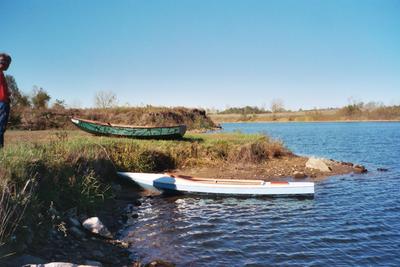
I decided to sheath the outside of the hull up
to the gunnels with Xynol cloth and epoxy from Raka. The interior
of the cockpit is sheathed with epoxy and 6 ounce glass cloth.
The interior areas of the bow and stern where not sheathed.
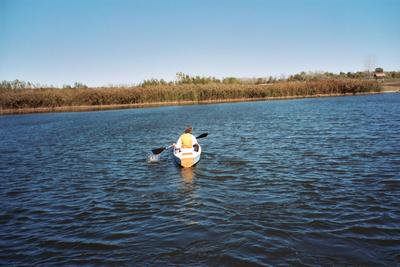
All seams in the areas that were to be sheathed,
received a single layer of 3 inch glass seam tape, while 2 layers
of seam tape were applied to seams in the non-sheathed areas
of the boat.
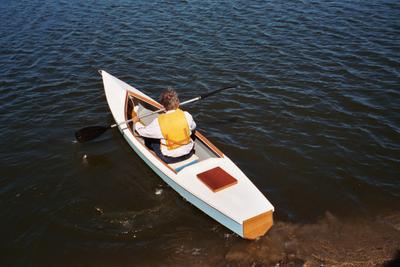
Behr-brand latex primer and latex exterior house
paint provided the finish, with the exception of the coamings
and the hatch cover, which were saturated with house deck stain.
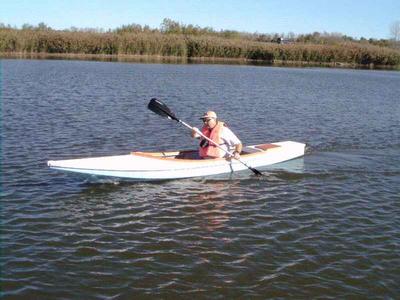
As constructed, the boat weighs 83 pounds and
feels extremely solid, even when I (a BIG guy) climb in. The
interior cockpit sheathing could be dispensed with, for a savings
of about 8 lbs or so.
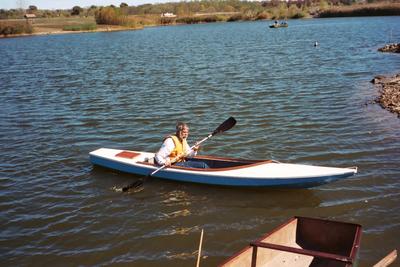
Jim went along on the first outing and had a chance
to try-out the boat, as the photo above shows. He could find
little fault with the way it handled. I found the boat easy
to paddle with both a double-bladed kayak paddle and also with
a single-bladed canoe paddle. I find sitting cross-legged on
an ordinary boat cushion to be a comfortable paddling position.
I do suggest keeping a sponge in the cockpit in order to remove
the small amounts of "bilge water" that the double-paddle
brings aboard.
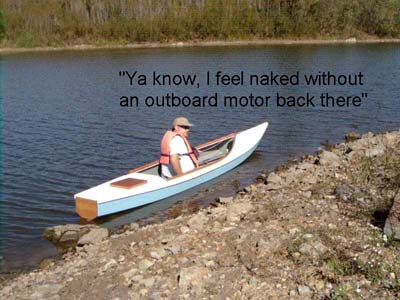
All in all, although my larsboat did come up a
little short in length, that appears to be the only area in
which it "comes up short."
Max
(editors note: Max writes the popular
Duckworks column "Obsolete
Outboards"
and moderates the Michalak
discussion group)

